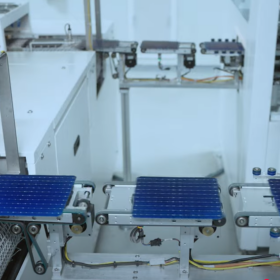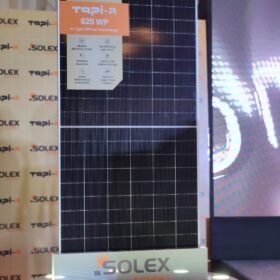The Indian solar market explodes – with an addition of 9,629 MW in new large-scale and rooftop solar capacity, which is more than 50% installed in 2016 (4,313 MW), 2017 is the best year of Indian solar installation to date. 90% of the solar capacity installed in 2017 accounted for by large-scale solar installations, whereas 10% came from rooftop solar. Moreover, rooftop installations grew by 56% and gaining importance with a total of nearly 1.6 GW in December 2017. Solar became the largest single source of new power capacity additions, accounting for about 45% of all new generation capacity added in India during 2017. India’s pipeline of utility-scale projects under development stood at approximately 10.6 GW at year-end 2017, with another 4.3 GW of tenders pending auction. The Government of India settled 175 GW installed green energy by 2022.
Intersolar India moves to Bangalore
The positive development of India’s solar industry was notable at Intersolar India 2017. The event was blessed with a total attendance of about 13,000 solar and energy storage experts. On December 11-13, 2018, Intersolar India will be celebrating its 10th anniversary in Bangalore – India’s Silicon Valley, technology hub and one of the top solar markets. Bangalore is the capital city of the state of Karnataka, which installed over 2 GW and together with the state of Telangana, accounted for approximately 50 percent of all installations across Pan India in 2017. More than 17,000 professionals will examine technologies and innovations of more than 300 exhibitors in Hall 1 and 2 of the Bangalore International Exhibition Centre on December 11-13, 2018 in Bangalore. The must-attend event provides a platform for all industry professionals to meet, exchange and discuss ideas as well as promote the interest of the Indian solar industry. From special forums to workshops and an extensive conference program, this year’s show will be powered by special activities. In addition, Intersolar India will continue to connect solar businesses in Mumbai on April 4-5, 2019 with a focus on financing and India’s western solar markets.
Strong Focus on Energy Storage and Electric Mobility
The global electrical energy storage (ees) market is forecasted to double six times between 2016 and 2030 according to Bloomberg New Energy Finance. India together with USA and Japan is predicted to install 50% of energy storage systems by 2030. The electric mobility market – is the next big cleantech opportunity in India. With the National Electric Mobility Mission Plan to achieve 7 million vehicles by 2020 and the announcement by the Minister for Power & Renewable Energy to achieve 100 Percent EVs by 2030, the electric vehicle (EV) market in India is beginning to gain momentum. India’s EV mission could drive down global battery prices and eventually become an export hub for battery production. Domestic battery manufacturing to supply the transition to EVs is an important market opportunity for the Indian economy.
Karnataka is the first Indian state to launch a specific EV policy. Through this procurement, the state government has demonstrated its resolve to move towards clean mobility and reduced carbon emissions. The Karnataka government is all set to procure 640 Electric Vehicles (EVs) under the Faster Adoption and Manufacturing of (Hybrid &) Electric Vehicles (FAME) program.
Intersolar India is supporting not only the solar industry, but also the energy storage and electric mobility industry in India. The event accounted around 50 companies showcasing electrical energy storage solutions in 2017, and plans to double the exhibition space with energy storage and electric mobility solutions at the special exhibitions ees and Power 2 Drive India in 2018.





